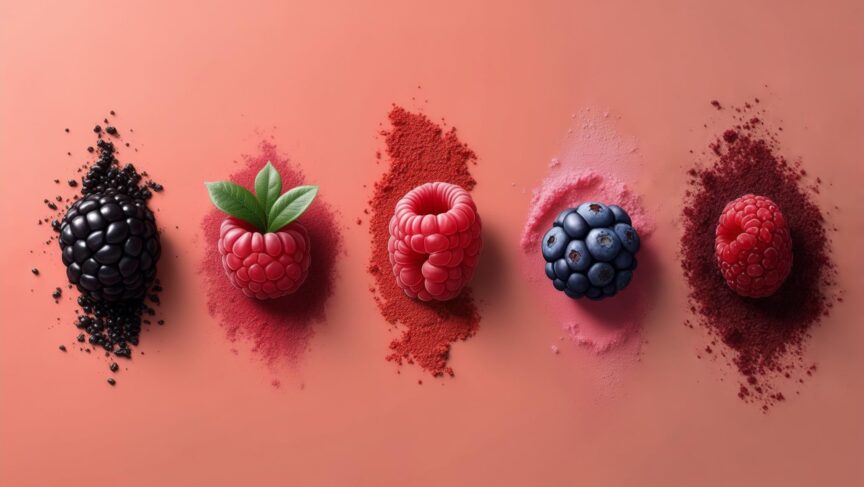Color isn’t just aesthetic, it’s psychological, cultural, and deeply rooted in human cognition. At Adberries, we’ve learned that understanding color psychology across cultures isn’t optional for global brands; it’s essential for creating authentic connections. But here’s what many designers miss: the science behind why certain colors work in some markets and fail spectacularly in others.
The Neuroscience of Color Memory
Research from the University of British Columbia shows that colors can improve memory performance by up to 75%. But here’s the cultural twist: this memory enhancement varies significantly based on cultural color associations. Colors that feel “natural” to a culture are processed faster and remembered longer.
Studies in cognitive psychology reveal that warm colors (reds, oranges) are processed 12% faster than cool colors, but this processing speed changes dramatically based on cultural context. In cultures where red signifies danger, the brain’s threat-detection systems activate, actually slowing cognitive processing.
Cultural Color Meanings: The Research
Red Across Cultures:
- China: Research by Jiang et al. (2018) confirms red increases purchase intention by 23% due to luck associations
- Western Markets: Studies show red creates urgency but can reduce trust in financial contexts by 15%
- India: Associated with purity and fertility; increases engagement in wedding/family-related services by 31%
Blue’s Global Impact:
- Cross-cultural studies (Labrecque & Milne, 2012) show blue consistently builds trust across 23 countries
- Middle Eastern markets: Light blue preferred over dark blue (67% vs 34% preference rates)
- East Asian markets: Blue-green combinations perform 28% better than pure blue
Green’s Complex Psychology:
- Islamic cultures: Sacred color increases brand recall by 41% when used appropriately
- Western markets: Environmental associations boost “natural” product sales by 19%
- Ireland: Overuse can trigger “green fatigue” – 22% negative response to green-heavy designs
Real-World Applications: Adberries Case Studies
Ultrasawt
Beyond Flag Colors One of our clients, Ultrasawt, a news platform with multiple country-specific outlets, faced a significant branding challenge during their rebranding process. Each sub-outlet shared a similar logo and website layout, relying on color-coding to differentiate between them. However, these colors were based on national flags, many of which use similar color schemes, leading to user confusion about which country-specific outlet they were browsing.
At Adberries, we tackled this by completely rethinking the color strategy. Instead of relying on flag colors, we developed a new palette inspired by each country’s cultural identity and values. This approach allowed us to assign six distinct colors that offered clear visual contrast and helped users easily differentiate between sub-brands—without losing cultural relevance. The result was a cohesive yet distinctive system that honored cultural context while solving the practical navigation challenge.
Geeska
Cultural Color Storytelling Another notable project from 2024 was Geeska, a news and cultural outlet focused on Africa. The stakeholders were open to exploring contemporary trends, giving us creative freedom to approach the design with both purpose and innovation.
For this project, we prioritized simplicity in the overall visual language, using font weights to establish hierarchy and clarity. To bring vibrancy and depth to the site, we introduced distinct accent colors for each content category. These accents drew inspiration from rich African patterns, earthy land tones, and the colors of regional harvests resulting in a harmonious yet lively palette that brought the brand’s cultural essence to life while maintaining excellent usability.
Color Retention and Business Applications
Memory Research Findings:
- High-contrast color combinations are remembered 67% longer than monochromatic schemes
- Culturally familiar colors are recalled 3x faster than unfamiliar combinations
- Emotional color associations create 2.5x stronger brand memory than neutral palettes
Industry Color Psychology:
Financial Services:
- Blue dominates globally (Bank of America, Barclays) – research shows 78% trust association
- Green secondary for growth messaging – increases investment confidence by 24%
- Red avoided in most markets except China, where it’s used for prosperity messaging
Healthcare:
- Blue and white combinations reduce patient anxiety by 31% (Journal of Environmental Psychology)
- Green in waiting areas lowers stress hormones by 23%
- Cultural adaptation crucial: White means death in many Asian cultures
Technology:
- Blue for trust (Facebook, LinkedIn) – increases user engagement by 19%
- Orange for creativity (Mozilla, VLC) – boosts creative task performance by 13%
- Black for premium positioning (Apple) – increases perceived value by 27%
Food & Hospitality:
- Red and yellow stimulate appetite – increases food orders by 15-20%
- Cultural exceptions: Blue suppresses appetite in most cultures but increases it in Mediterranean regions
- Green for health positioning – boosts “healthy choice” selections by 34%
WCAG Standards: The Foundation of Accessible Color Design
At Adberries, testing all colors against WCAG (Web Content Accessibility Guidelines) standards is crucial for every digital experience we create. This isn’t just about compliance, it’s about ensuring our culturally intelligent design solutions are accessible to everyone.
WCAG Color Requirements:
- Contrast Ratios: Minimum 4.5:1 for normal text, 3:1 for large text
- Color Independence: Information cannot rely on color alone
- Cultural Accessibility: Colors must work for users with different visual abilities across all cultures
Our WCAG Integration Process:
- Test all color combinations during the design phase
- Validate cultural color choices against accessibility standards
- Ensure color-coding systems include additional visual indicators
- Consider how cultural color preferences intersect with accessibility needs
This approach ensures that our culturally intelligent color strategies remain inclusive and accessible to all users, regardless of visual abilities or cultural background.
The Adberries Cultural Color Framework
Based on our research and real-world projects across UK, Qatar, African, and European markets, we’ve developed a systematic approach:
1. Cultural Color Research
- Research primary cultural color associations for target markets
- Test emotional responses to color combinations
- Analyze competitor color strategies in each region
- Validate against WCAG accessibility standards
2. Strategic Color Development
- Move beyond obvious cultural symbols (like flag colors) to deeper cultural values
- Create distinctive palettes that honor cultural context while solving business challenges
- Develop scalable color systems that work across multiple markets or sub-brands
3. Implementation and Testing
- Test color combinations for both cultural resonance and accessibility
- Measure engagement and conversion rates across different cultural segments
- Continuously refine based on real user feedback and performance data
Practical Implementation
For Global Brands:
- Use blue as a universal trust builder, but adjust shades culturally
- Test red carefully – powerful but culturally sensitive
- Green works for environmental messaging but research religious contexts
- Always validate color choices against WCAG standards
For Regional Adaptation:
- Look beyond surface-level cultural symbols to deeper cultural values
- Create color variants for different markets while maintaining brand recognition
- Use cultural color preferences for CTAs and conversion elements
- Ensure all cultural adaptations meet accessibility requirements
Measurement Metrics:
- Track engagement rates by color scheme and region
- Monitor brand recall across different cultural segments
- Test conversion rates for culturally adapted vs. standard color schemes
- Measure accessibility compliance across all cultural variations
Color is just one layer of cultural design psychology, but as our Ultrasawt and Geeska projects demonstrate, it’s a powerful tool for creating meaningful connections across cultures.
Remember: color isn’t decoration, it’s communication. And communication that respects both cultural psychology and accessibility creates connections that truly transcend borders.
Ready to create culturally intelligent and accessible color strategies for your global brand? Contact our team at [email protected]

